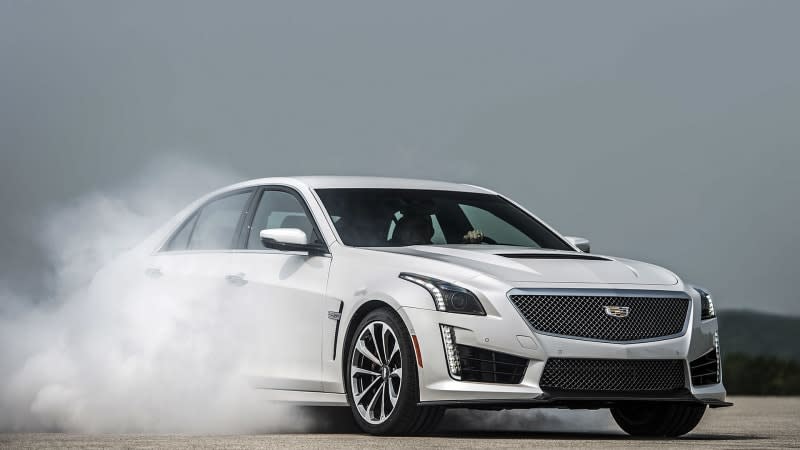The House of V: Cadillac's speed shop turns 20

While the Corvette and Camaro may be GM's longest-lived performance icons, Cadillac has bitten off more than its share of the GM motorsports pie over the past two decades. The road-going result is V: the performance series that was born 20 years ago and promises to continue — hopefully for at least 20 more. With electrification around the corner, we're taking a look back at the internal-combustion legacy of the Cadillac V series. To think it all started with just one model.

2004 CTS-V
The first CTS-V was a slap in the face to European luxury sedan sensibilities. Its overhead-valve, 5.7-liter (later 6.0) V8 was raucous and rude in the company of Germany's finest overhead-cam offerings, but the car was undeniably quick and unlike previous attempts at sporty Cadillacs, it could properly zig. Not only that, but it established a key attribute that would go on to define future V-Series Cadillacs: its oddball size. Too big to match the BMW M3 and Mercedes C63 pound-for-pound but not beefy enough to compete with Germany's midsizers, the CTS-V in some ways defied categorization. While it only ever mattered in magazine tests, this legacy was passed down to the smaller ATS.
The first-gen CTS-V's 400 horsepower may seem paltry by modern standards, but for the time, that was more than enough to compete, and the V helped establish GM's rear-wheel-drive Sigma platform as a world-class performance chassis.

2005 STS-V
Before landing on the V-Series formula as we understand it today, Cadillac made a few segues. The STS-V wasn't misguided per se but it illustrates how wide of a net GM initially tried to cast. Unlike the CTS, the STS utilized GM's Northstar overhead-cam V8 with a supercharger slapped on top. That may have looked more sophisticated than the CTS-V's LS V8 on paper (and had more power to boot), but it didn't offer any real-world advantages. The STS also lacked the CTS's smaller, more responsive chassis, and it never really caught on with buyers.

2006 XLR-V
On the subject of weird, the XLR-V is by far the biggest outlier in this list. Not a Cadillac in the strictest sense, but rather a Corvette chassis re-engineered to accommodate the same supercharged Northstar V8 that was utilized in the STS. Like the bigger sedan, the XLR-V was a bit of a consumer dud. Given that it offered less power than the STS-V and was never offered with a manual transmission, it had little going for it other than its wild looks and conversation-starter packaging. A Cars & Coffee hero, to be sure, but a track hero? Eh.

2009 CTS-V
Now we're cooking. The 2009 CTS-V was the first of the truly brutish modern V models and established the formula as we understand it today: big forced induction power, athletic chassis and virtually no compromises. The '09 and up CTS-V packed on a supercharger for a far more potent 550-horsepower output. Yeah, it grew (and spawned both a coupe and the above wagon), but so did its competence. Now certainly too large to be taken seriously as an M3 or C63 competitor, it continued to defy traditional luxury segmentation, but nobody could refute its performance credentials. V was the real deal.

2014 CTS-V
At the risk of sounding dramatic, the third-gen CTS-V was a case of two steps forward, one step back. This was the first CTS to ride on the new Alpha chassis, which GM developed to do everything Sigma had done, only better. Alpha underpinned the CTS, ATS and 6th-generation Chevy Camaro and soldiers on today beneath both of Cadillac's Blackwings. It's a winner. But the 2014 CTS-V came only as a sedan and lacked a critical element for many V buyers: a manual transmission. Cadillac went on to correct this error with the CT5-V Blackwing.

 Yahoo Autos
Yahoo Autos 
